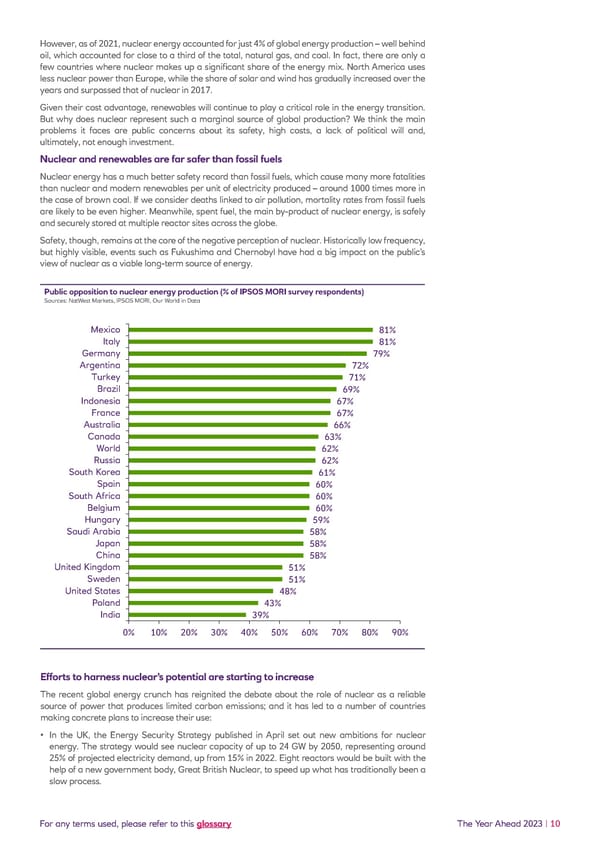However, as of 2021, nuclear energy accounted for just 4% of global energy production – well behind oil, which accounted for close to a third of the total, natural gas, and coal. In fact, there are only a few countries where nuclear makes up a significant share of the energy mix. North America uses less nuclear power than Europe, while the share of solar and wind has gradually increased over the years and surpassed that of nuclear in 2017. Given their cost advantage, renewables will continue to play a critical role in the energy transition. But why does nuclear represent such a marginal source of global production? We think the main problems it faces are public concerns about its safety, high costs, a lack of political will and, ultimately, not enough investment. Nuclear and renewables are far safer than fossil fuels Nuclear energy has a much better safety record than fossil fuels, which cause many more fatalities than nuclear and modern renewables per unit of electricity produced – around 1000 times more in the case of brown coal. If we consider deaths linked to air pollution, mortality rates from fossil fuels are likely to be even higher. Meanwhile, spent fuel, the main by-product of nuclear energy, is safely and securely stored at multiple reactor sites across the globe. Safety, though, remains at the core of the negative perception of nuclear. Historically low frequency, but highly visible, events such as Fukushima and Chernobyl have had a big impact on the public’s view of nuclear as a viable long-term source of energy. Public opposition to nuclear energy production (% of IPSOS MORI survey respondents) Sources: NatWest Markets, IPSOS MORI, Our World in Data Mexico 81% Italy 81% Germany 79% Argentina 72% Turkey 71% Brazil 69% Indonesia 67% France 67% Australia 66% Canada 63% World 62% Russia 62% South Korea 61% Spain 60% South Africa 60% Belgium 60% Hungary 59% Saudi Arabia 58% Japan 58% China 58% United Kingdom 51% Sweden 51% United States 48% Poland 43% India 39% 0% 10% 20% 30% 40% 50% 60% 70% 80% 90% Efforts to harness nuclear’s potential are starting to increase The recent global energy crunch has reignited the debate about the role of nuclear as a reliable source of power that produces limited carbon emissions; and it has led to a number of countries making concrete plans to increase their use: • In the UK, the Energy Security Strategy published in April set out new ambitions for nuclear energy. The strategy would see nuclear capacity of up to 24 GW by 2050, representing around 25% of projected electricity demand, up from 15% in 2022. Eight reactors would be built with the help of a new government body, Great British Nuclear, to speed up what has traditionally been a slow process. For any terms used, please refer to this glossary The Year Ahead 2023 | 10
 NatWest Year Ahead 2023 Page 9 Page 11
NatWest Year Ahead 2023 Page 9 Page 11